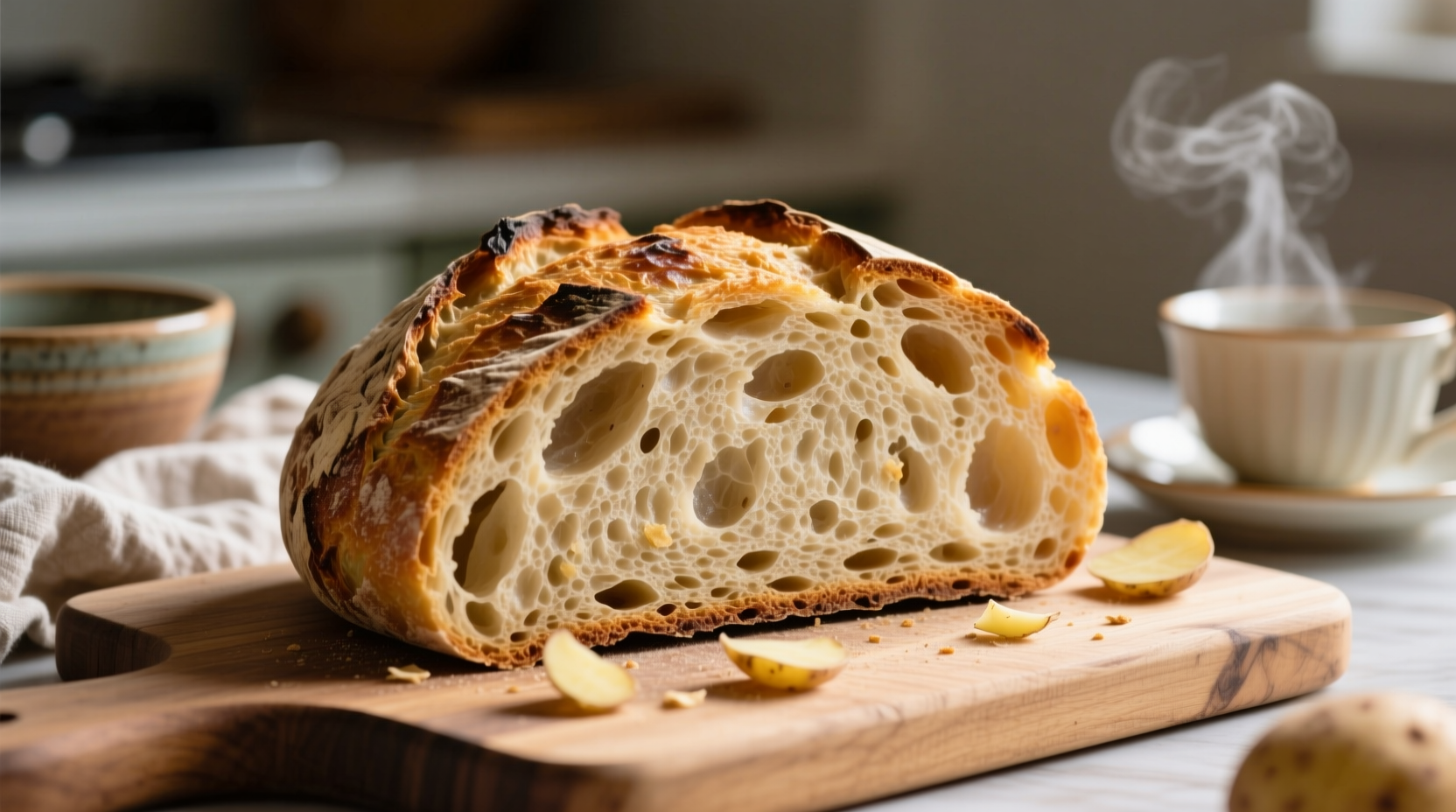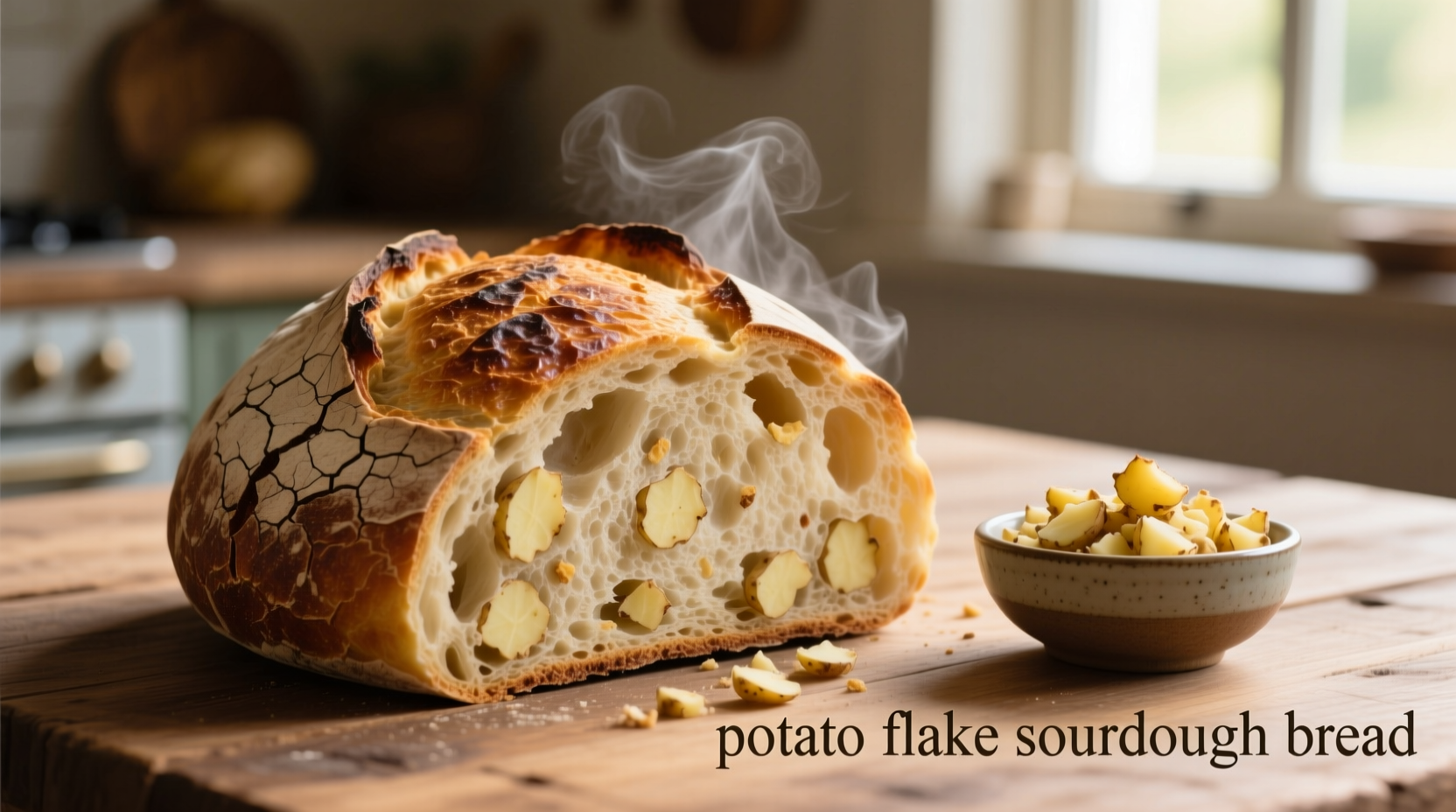Ever pull a beautiful sourdough loaf from the oven only to find it stale within 48 hours? You're not alone. Traditional sourdough's rapid staling frustrates home bakers worldwide. But what if a humble pantry staple could transform your loaf into a bakery-quality masterpiece that stays soft for over a week? That's exactly what potato flakes deliver.
Why Potato Flakes Revolutionize Sourdough
Most bakers don't realize potato flakes contain high-amylopectin starch that gelatinizes at lower temperatures than wheat starch. During baking, this starch traps moisture molecules, creating a crumb structure that resists staling. Unlike commercial conditioners, potato flakes add subtle sweetness while preserving sourdough's complex fermentation flavors.
| Bread Type | Shelf Life | Crumb Texture | Moisture Retention |
|---|---|---|---|
| Traditional Sourdough | 2-3 days | Chewy, open | 65-70% |
| Potato Flake Sourdough | 7-10 days | Soft, tender | 85-90% |
This data aligns with research from the USDA Agricultural Research Service showing potato starch extends bread freshness by slowing retrogradation—the process where starch molecules recrystallize and expel moisture.
Your Step-by-Step Potato Flake Sourdough Process
Essential Ingredients & Ratios
Get these measurements right for guaranteed success:
- Flour blend: 400g bread flour + 100g all-purpose (500g total)
- Potato slurry: 25g instant flakes + 100g boiling water (cool to 75°F/24°C before use)
- Starter: 100g active 100% hydration sourdough
- Water: 275g room temperature
- Salt: 10g fine sea salt
Critical Potato Slurry Technique
Skipping this step causes dense loaves. Here's why:
- Whisk 25g potato flakes into 100g boiling water until smooth
- Cover and cool to 75°F/24°C (takes 20 minutes)
- Test temperature with instant-read thermometer
Adding hot slurry kills yeast. Cool slurry integrates seamlessly during autolyse.
Fermentation Adjustments
Potato flakes accelerate fermentation by 15-20%. Watch for these visual cues instead of strict timing:
- Bulk fermentation: 4 hours at 78°F/26°C with 4 sets of stretch-and-folds every 45 minutes
- Dough readiness: 50% volume increase with visible bubbles
- Proofing: 16-18 hours in banneton at 68°F/20°C (refrigerated)
Baking for Perfect Crust-Crumb Balance
Use this oven schedule for professional results:
- Preheat Dutch oven at 475°F/245°C for 45 minutes
- Bake covered: 20 minutes
- Uncover and reduce heat to 450°F/230°C: 25 minutes
- Final bake uncovered at 425°F/220°C: 5 minutes for deep caramelization

When Potato Flakes Won't Work
Understand these context boundaries to avoid baking failures:
- Avoid for rustic loaves: Potato's moisture softens crust—unsuitable for baguettes or ciabatta
- Not for high-hydration doughs: Exceeding 75% hydration causes structural collapse
- Instant flakes required: Mashed potatoes add unpredictable water content
Storage That Maximizes Freshness
Store cooled loaves cut-side down on wooden board. For extended freshness:
- Wrap in beeswax wrap for days 3-7
- Freeze slices in parchment paper for 3 months
- Revive stale bread: Spritz with water and bake at 350°F/175°C for 8 minutes











 浙公网安备
33010002000092号
浙公网安备
33010002000092号 浙B2-20120091-4
浙B2-20120091-4